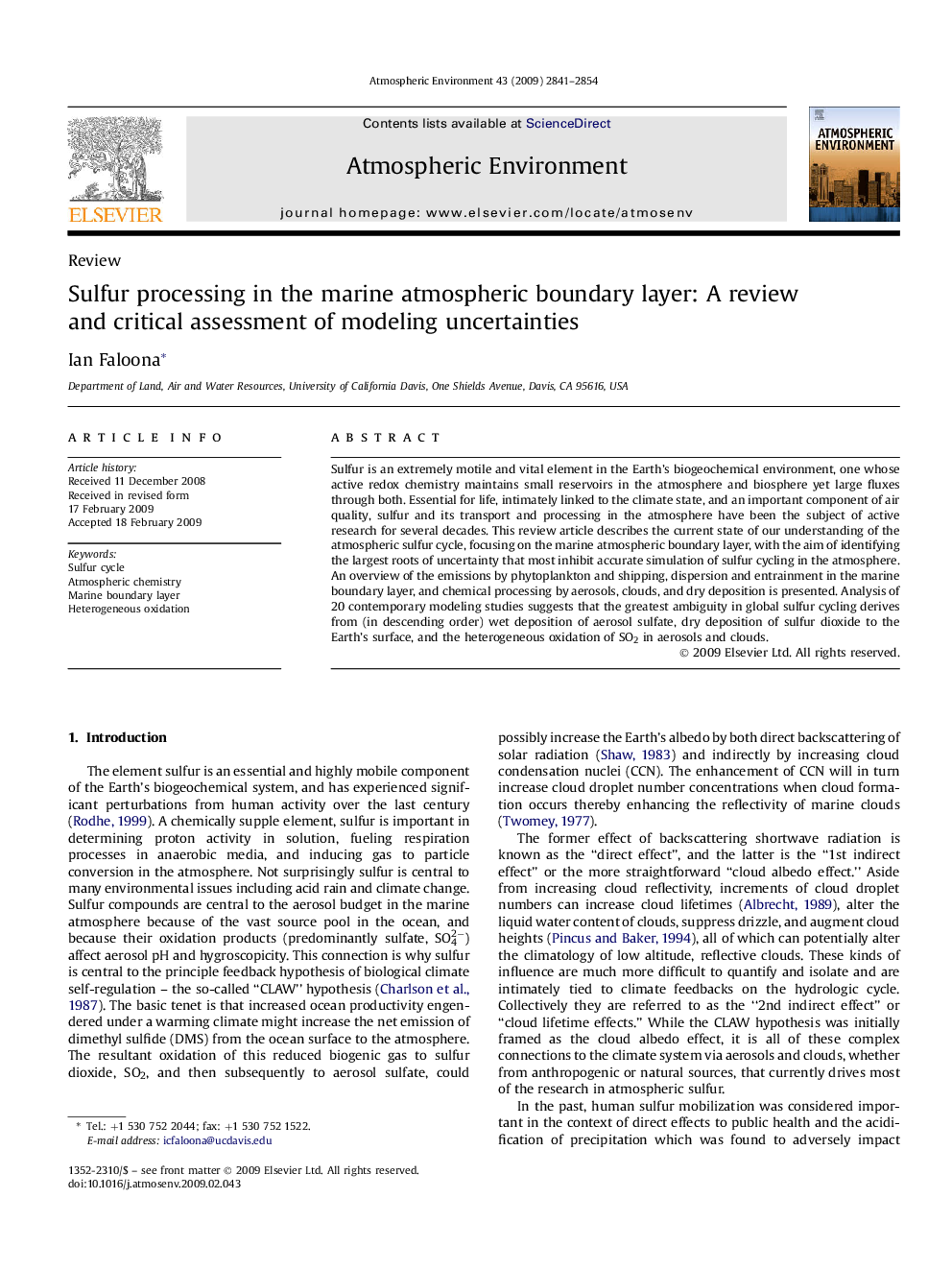| Article ID | Journal | Published Year | Pages | File Type |
|---|---|---|---|---|
| 4441034 | Atmospheric Environment | 2009 | 14 Pages |
Sulfur is an extremely motile and vital element in the Earth's biogeochemical environment, one whose active redox chemistry maintains small reservoirs in the atmosphere and biosphere yet large fluxes through both. Essential for life, intimately linked to the climate state, and an important component of air quality, sulfur and its transport and processing in the atmosphere have been the subject of active research for several decades. This review article describes the current state of our understanding of the atmospheric sulfur cycle, focusing on the marine atmospheric boundary layer, with the aim of identifying the largest roots of uncertainty that most inhibit accurate simulation of sulfur cycling in the atmosphere. An overview of the emissions by phytoplankton and shipping, dispersion and entrainment in the marine boundary layer, and chemical processing by aerosols, clouds, and dry deposition is presented. Analysis of 20 contemporary modeling studies suggests that the greatest ambiguity in global sulfur cycling derives from (in descending order) wet deposition of aerosol sulfate, dry deposition of sulfur dioxide to the Earth's surface, and the heterogeneous oxidation of SO2 in aerosols and clouds.
